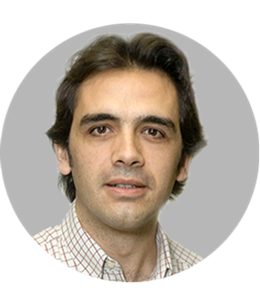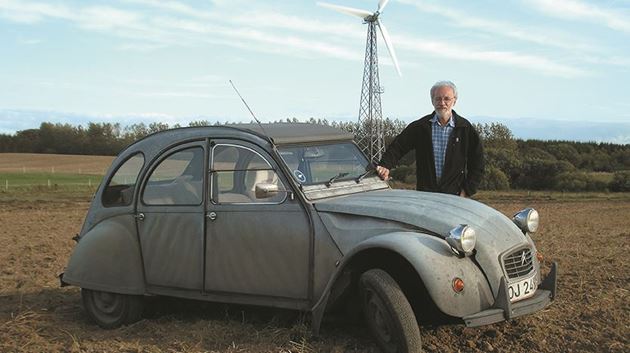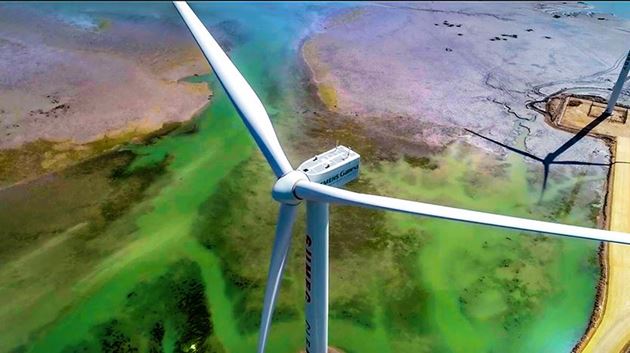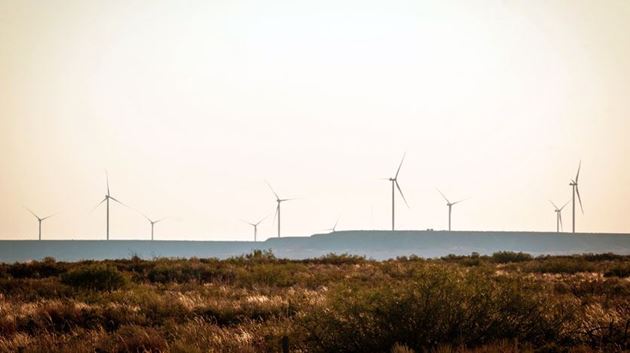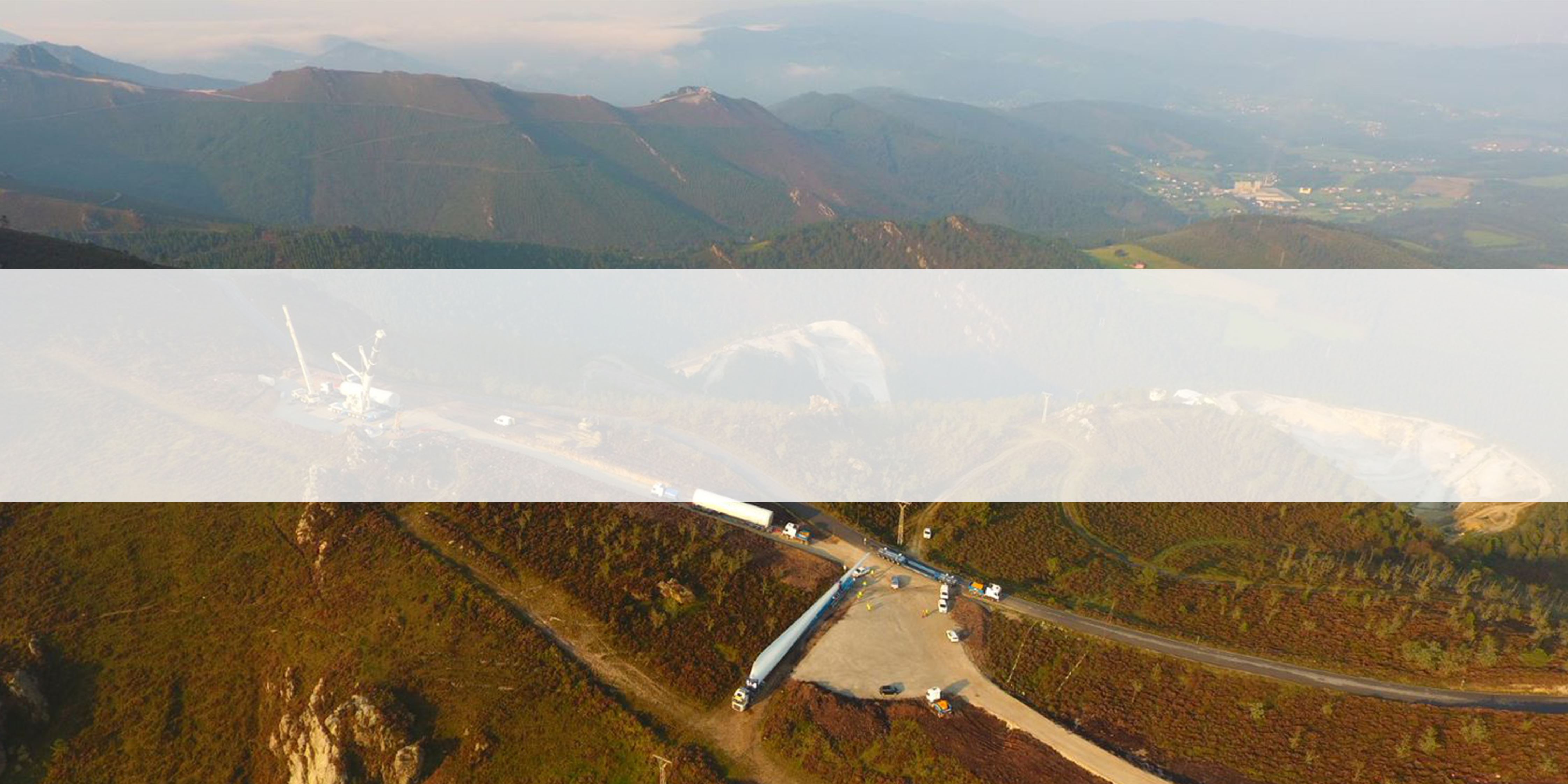
Green energy at 2,000 meters above sea level
Madrid / 27 October 2020
Slopes with a gradient of up to 32%, 57-meter blades, close to 100-meter towers, more than 120 ton nacelles, and often difficult weather conditions with fog, rain and sometimes snow. Transporting components can become the biggest challenge in the construction of a wind farm. And this this is the case at Nudo, in Asturias (Spain), where Siemens Gamesa is installing a total of 49 wind turbines for Iberdrola at an altitude of almost 2,000 meters.
Communication Manager South Europe & Africa
Often the most impressive thing about a wind farm is its location: at the top of the mountain, where the wind blows the strongest. And the question we all ask when looking up at them is how it is possible to get the components of these wind turbines - which are increasingly getting bigger and heavier - to such steep places, where not even a normal car can access.
This is what makes transport in some cases the most complicated element in the construction of a wind farm. Carlos Vildosola, Siemens Gamesa's Logistics director for Southern Europe and Africa, identifies the challenges involved in a project: "The size, especially of the blades, which today can reach 100 meters in onshore, the diameter of the towers, almost five meters, which complicates passage through tunnels, and the weight of towers and nacelles, which limits going over bridges and some roads."
In the case of Nudo de Asturias the situation is even more complicated because of its location in the middle of the mountains, at a high altitude, and because of the project size, with almost 50 wind turbines. "To be able to take the components to their destination we have to go up and down slopes that in some cases have a 32% gradient," says Carlos, who confesses that this is one of the most complicated projects he has faced in his career.
This is what makes transport in some cases the most complicated element in the construction of a wind farm. Carlos Vildosola, Siemens Gamesa's Logistics director for Southern Europe and Africa, identifies the challenges involved in a project: "The size, especially of the blades, which today can reach 100 meters in onshore, the diameter of the towers, almost five meters, which complicates passage through tunnels, and the weight of towers and nacelles, which limits going over bridges and some roads."
In the case of Nudo de Asturias the situation is even more complicated because of its location in the middle of the mountains, at a high altitude, and because of the project size, with almost 50 wind turbines. "To be able to take the components to their destination we have to go up and down slopes that in some cases have a 32% gradient," says Carlos, who confesses that this is one of the most complicated projects he has faced in his career.
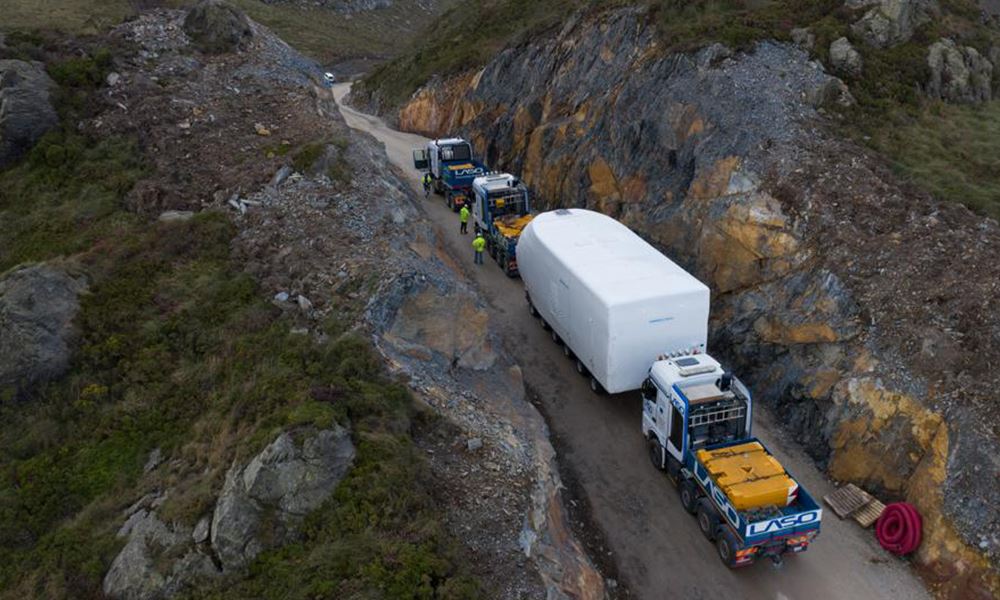
The best drivers for a job with 99 bends
The route has 99 bends, some of them at 180 degrees and uphill, with millimetric maneuvers. Paulo Franco, board member of Laso, the company in charge of transportation of components at Nudo, points out that for this project "the design and preparation of the route are key, we cannot make any mistakes; that is why for a project as difficult as Nudo we need to have not only the right machines, but also the company's most experienced drivers." Paulo adds: "It is a pride to share with Siemens Gamesa the objective of producing renewable energy and reducing CO2 emissions, especially through projects as this one".
Weather conditions are another key element that adds complexity to the project. Persistent rain can force sections of the route to be rebuilt, rain and fog make it difficult for trucks to move and snow forces transport to be stopped. Eneko Díez, Program director at Siemens Gamesa, stresses that in a project like Nudo a good planning is particularly important, and "to achieve this it is important to have a quality and experienced team, such as that of Siemens Gamesa, a supplier like Laso with which we trust difficult projects, and a customer who understands the complexity of the project, as is Iberdrola." Eneko outlines how important is to “share a common purpose with Laso and Iberdrola, which is to produce clean energy and reduce CO2 emissions. "
Nudo is one of the many projects that Siemens Gamesa is carrying out for Iberdrola, a company that has more than 16.6 GW of renewable energy in Spain. According to Clara Fierro, director of the project at Iberdrola, "the main challenge of the transportation at Nudo is the complexity of the route, as well as the logistics required to get the components up to the parks without affecting the various activities in the area - farms, school buses, entrance to the factories." Clara highlights from Siemens Gamesa's contribution, "the experience and solutions needed to to tackle very complex issues, as well as a dedicated team, pushing for the project to go ahead."
Nudo is one of the many projects that Siemens Gamesa is carrying out for Iberdrola, a company that has more than 16.6 GW of renewable energy in Spain. According to Clara Fierro, director of the project at Iberdrola, "the main challenge of the transportation at Nudo is the complexity of the route, as well as the logistics required to get the components up to the parks without affecting the various activities in the area - farms, school buses, entrance to the factories." Clara highlights from Siemens Gamesa's contribution, "the experience and solutions needed to to tackle very complex issues, as well as a dedicated team, pushing for the project to go ahead."
Snow removal machines from the North of Spain to Poland
The ability to find quick solutions is key in the implementation of projects. Carlos Vildosola recalls as an anecdote that in order to remove the snow that prevented the transport of some components in Poland, it was necessary to hire a company from the North of Spain, since all the snow removal machines in Poland and neighboring countries, such as Germany, were busy clearing the roads and motorways, which were blocked by one of the highest snowfalls in living memory in the area.
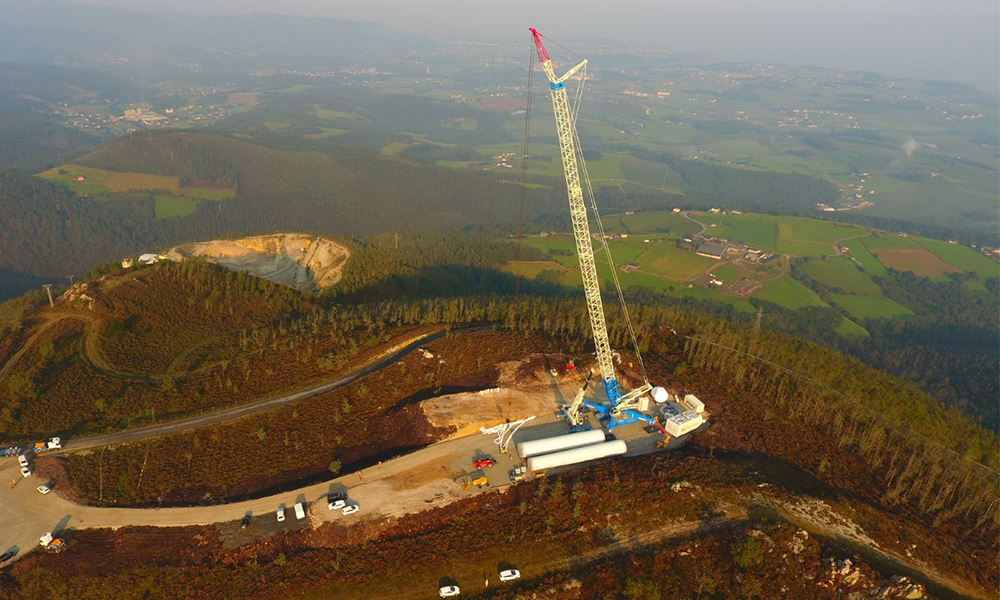
There are two other key elements in project logistics that can be a real headache, although in the case of Nudo de Asturias it has been relatively simple. The first is the availability of land: "It can happen that a project is delayed longer than necessary simply because the owner of a field that we have to use to turn a lorry refuses to sell," says Carlos.
Although what can really be an odyssey are the permits, the blissful bureaucracy. There are building and transport permits, which can vary depending on the time of year. And the process is tortuous because there are various administrations involved - local, regional and state in many countries -, others with the power to veto, such as private motorways, and then the various police forces, which are responsible for escorting transport. “There are projects where we have to coordinate the permits from 20 different authorities, and we have to get those permits by the same date; if there is a small delay, we have to change everything," Carlos said.
Although what can really be an odyssey are the permits, the blissful bureaucracy. There are building and transport permits, which can vary depending on the time of year. And the process is tortuous because there are various administrations involved - local, regional and state in many countries -, others with the power to veto, such as private motorways, and then the various police forces, which are responsible for escorting transport. “There are projects where we have to coordinate the permits from 20 different authorities, and we have to get those permits by the same date; if there is a small delay, we have to change everything," Carlos said.

There is no doubt that the transport of the components necessary to build a wind farm poses great challenges. In the case of Nudo (knot in Spanish), the name speaks for itself, and the complexity is so great that it requires big efforts. But all this has a great reward because it means uniting three companies - Siemens Gamesa, Laso and Iberdrola - committed to produce clean energy at an altitude of 2,000 meters for over 100,000 homes and to reduce CO2 emissions by more than 65,000 tons. One more step in the protection of the environment.
The project forms part of the ‘Partnerships with Purpose’ series of articles highlighting inspiring projects that Siemens Gamesa is working on with partners to tackle the climate crisis through the power of relationships, innovation, people and community.
